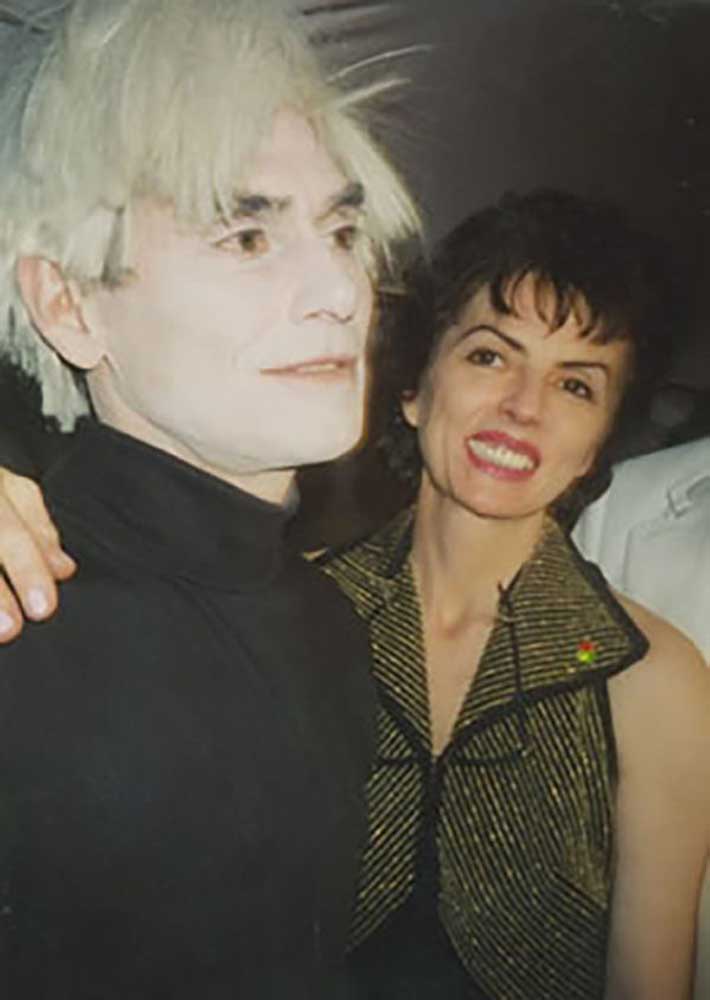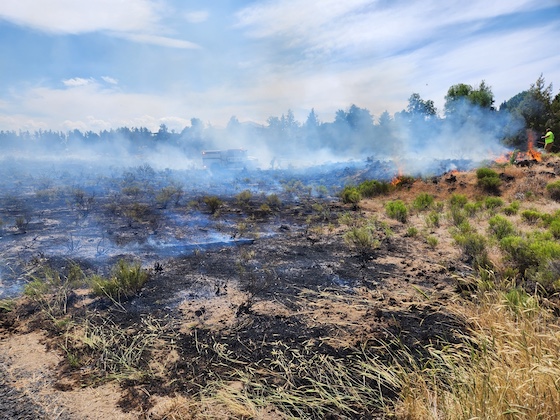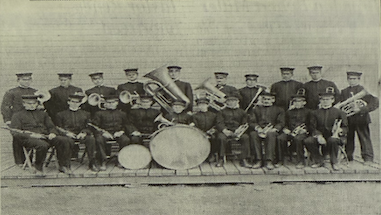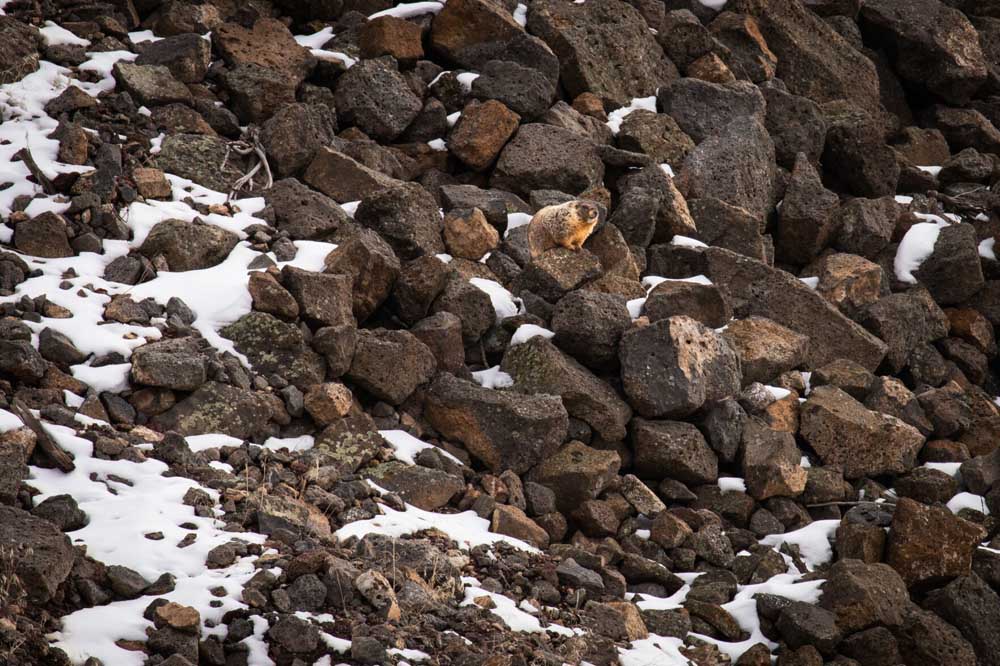The day Andy Warhol pranked Oregon college students
Published 12:00 am Wednesday, October 26, 2016

- Audart Gallery / Submitted photoAllen Midgette with Audrey Regan of New York’s Audart Gallery, many years after Midgette impersonated Andy Warhol in a series of lectures in Oregon.
Editor’s note: This is an extensive revision and rewrite of a 2008 article on the same topic.
On the evening of Oct. 5, 1967, students were pouring out of the doors of one of the biggest rooms in Oregon State University’s Erb Memorial Union.
It was a big day. The one and only Andy Warhol was scheduled to appear, for something he called an “illustrated lecture.” For the students, it was a once-in-a-lifetime chance to see and talk to one of the most influential characters in the art world … or, so they thought.
At last the man of the hour stepped out on the stage with already legendary film director Paul Morrissey. With his crazy-cut white hair, his ever-present Ray-Ban Wayfarers and his stylish cigarette, the speaker was instantly recognizable as Warhol.
Almost immediately, the lecture got off to a rocky start. The two men on the stage started an “art film” showing a young black man in jeans and T-shirt running through crowds in New York City yelling, “I love you! I love you!” to everyone whose eye he could catch. The film, of course, had no narrative arc or plot — the absence of any such bourgeois conventions was de rigeur in the avant-garde art of the day — so basically it was just several dozen minutes of that sort of thing, until the film ran out of the spool. Then the lights came up, and Morrissey asked if anyone had any questions.
The questioners started out curious, but soon they were sounding baffled and by the end of the evening some of them were actually angry.
“I don’t know how to say what my meaning is,” he told one student. “I guess it means to me that I film it, mostly.”
“That is one of the big questions,” he told another, after being asked why he made films. “Let’s just say we do it to keep us off the streets.”
As the questions got tougher and more specific, Morrissey started breaking in and fielding them, to the annoyance of students who had wanted a response from Warhol.
By the end of the event, the students from the School of Journalism were starting to make their presence known, firing zingers at the white-wigged swinger on the stage. “Sir, do you give a damn?” one of them demanded. (Former students and colleagues of the late legendary journalism professor Bill Winter will instantly recognize the pedigree of that question.) The by-now-beleaguered speaker replied, hesitantly and vaguely, “Sure … (about) all kinds of things. It changes all the time.”
The Oregon students didn’t know it, but they were looking at one of their own up there on the stage: A University of Oregon-trained actor named Allen Midgette who was now one of Warhol’s cronies in the Factory art loft in New York City, dressed to look like Warhol and sent out to do a series of four college lectures for him. Warhol himself had never left New York.
The University of Oregon appearance was the second stop on the tour, and it represented a distinct turn for the worse. At the University of Utah, where it had started out, the reception had been warmer; but almost as soon as he’d left, faculty members were wondering if it was really Andy Warhol. The student newspaper there stepped up and started pulling together evidence, including a shot that one of their photographers had snuck of him during the visit — “Warhol” had been very insistent that no pictures be taken, but someone had anyway, likely intending it only as a personal souvenir. Close examination had left them convinced that unless Warhol had had a nose job, the speaker had been someone else.
And so it was that the day after “Warhol” spoke, Oregon Daily Emerald Entertainment Editor Chris Hougham got a phone call from an editor at the University of Utah’s student newspaper, the Daily Utah Chronicle, asking if there had been any suspicion of Warhol’s identity. Hougham assured her that it had been Warhol who appeared at the U of O; but after the phone call, Emerald staffers started connecting the dots as well.
By this time, of course, “Warhol” was well away from the Scene of the Crime, and moving on to his next appearance, at Linfield College in McMinnville. There the reception was considerably less hostile, according to the recollections of Mt. Angel College art professor Leland John, who traveled to McMinnville to attend. This was clearly due in part to the fact that, mindful of the trouble his vacuous answers had caused at the first two stops, Midgette had adopted the tactic of responding to most questions by simply issuing an ironic laugh or giggle.
Then it was on to Montana for one final appearance at Montana State University, and home once again to New York.
Meanwhile, back in Eugene, Register-Guard reporter Don Bishoff had actually gotten through to the source, and blown the cover off the whole thing.
“We had an aging hippie working on our copy desk, named Bill Thomas,” Bishoff recalled later. “Somehow he had the number for the pay phone on the wall at The Factory. So I called the number — and Paul Morrissey answered it.”
Morrissey had clearly made a variety of arrangements in case, but apparently it had never occurred to him that any of the hinterland yokels would be hip enough to actually know the phone number of the Factory’s ironic pay phone. Caught by surprise, Morrissey stammered a bit, then put Warhol on the line. And, after some head-scratching over how Bishoff could know it was the real Warhol this time, the artist confessed the whole thing.
“He was better than I am,” Warhol told Bishoff. “He was what the people expected. They liked him better than they would have liked me.”
“His explanation of how he sent the guy didn’t make sense,” Bishoff recalled. “I still think to this day he was pulling another Andy Warhol spoof, and proving a point that people wouldn’t know the difference.”
The student journalists in Utah, whose skepticism led to the full unmasking, seemed distinctly unimpressed. In a telephone interview, Morrissey told Chronicle Assistant Editor Kay Israel that impersonating each other was just regular hijinks for the art world’s self-styled avant-garde golden boys.
“We do it a lot in New York,” he explained.
“Well, being from the West, I don’t think we’re quite used to it,” she shot back.
Paul Cracroft, the director of lectures and concerts at the University of Utah, was even more acerbic about the whole thing. Cracroft, who had learned of the scam early enough to withhold payment for it, said he’d be open to having other pop artists come and talk at the U. of U — “if they’re wonderful and can assure us somehow that they’re coming themselves.” Asked how that might be accomplished, he quipped, “Blood tests and fingerprints.”
(Sources: Allen, Greg. “The Fake Warhol Lectures,” greg.org, 4-06-2007; archives of Eugene Register-Guard and Oregon Daily Emerald, Oct. 1967; personal recollections of Don Bishoff and Leland John, Jan. 2009)
Finn J.D. John teaches at Oregon State University and writes about odd tidbits of Oregon history. For details, see http://finnjohn.com. To contact him or suggest a topic: finn2@offbeatoregon.com or 541-357-2222.






